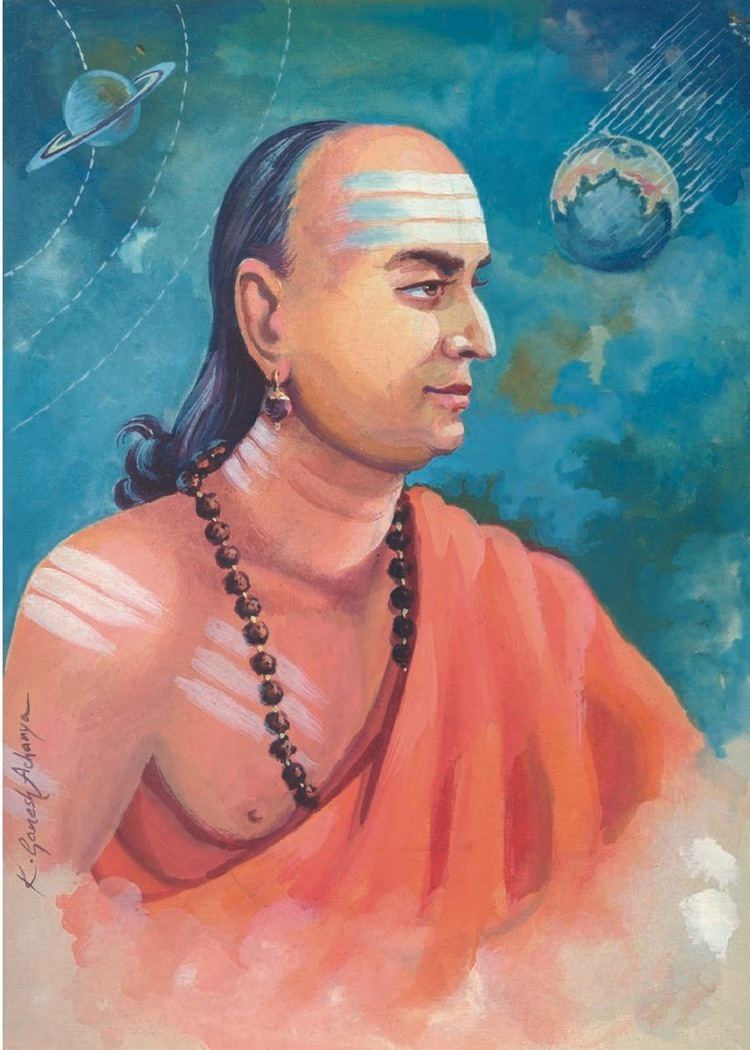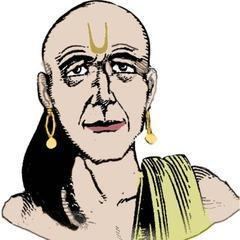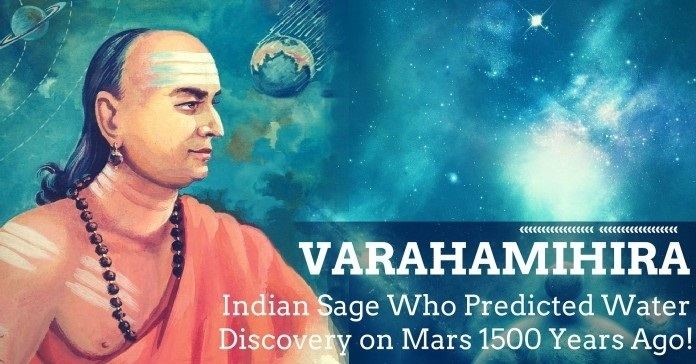Name Varahamihira Varahamihira Role Astronomer Period Gupta Empire | Siblings Bhadrabahu | |
 | ||
Occupation astronomer, mathematician, and astrologer Subject Astronomy, Astrology, Mathematics Books Brihat Jataka, Brhatsamhita, The Brhat samhita of Varaha Mihira, The Br̥ihajjatakam of Varaha Mihira Similar People Aryabhata, Brahmagupta, Bhaskara II, Bangalore Venkata, Bhadrabahu | ||
|Ancient Indian Astronomer Astrologer Varahamihira/shocking facts about ancient india /India Hisotyr
Varāhamihira pronunciation (505–587 CE), also called Varaha or Mihir, was an Indian astronomer, mathematician, and astrologer who lived in Ujjain. He was born in Avanti (India) region, roughly corresponding to modern-day Malwa, to Adityadasa, who was himself an astronomer. According to one of his own works, he was educated at Kapitthaka. He is considered to be one of the "Nine Jewels" (Navaratnas) of the court of legendary ruler Yashodharman Vikramaditya of Malwa.
Contents
- Ancient Indian Astronomer Astrologer Varahamihirashocking facts about ancient india India Hisotyr
- Teachers Of India Varahamihira
- Pancha Siddhantika
- Brihat Samhita
- On Astrology
- Sankhya Siddhanta
- Influences
- Trigonometry
- Arithmetic
- Combinatorics
- Optics
- References

Teachers Of India - Varahamihira
Pancha-Siddhantika

Varahamitra's main work is the book Pañcasiddhāntikā (or Pancha-Siddhantika, "[Treatise] on the Five [Astronomical] Canons) dated ca. 575 CE gives us information about older Indian texts which are now lost. The work is a treatise on mathematical astronomy and it summarises five earlier astronomical treatises, namely the Surya Siddhanta, Romaka Siddhanta, Paulisa Siddhanta, Vasishtha Siddhanta and Paitamaha Siddhanta. It is a compendium of Vedanga Jyotisha as well as Hellenistic astronomy (including Greek, Egyptian and Roman elements). Varahamihira was the first one to mention that the ayanamsa, or the shifting of the equinox is 50.32 seconds.

Brihat-Samhita

Another important contribution of Varahamihira is the encyclopedic Brihat-Samhita. It covers wide ranging subjects of human interest, including astrology, planetary movements, eclipses, rainfall, clouds, architecture, growth of crops, manufacture of perfume, matrimony, domestic relations, gems, pearls, and rituals. The volume expounds on gemstone evaluation criterion found in the Garuda Purana, and elaborates on the sacred Nine Pearls from the same text. It contains 106 chapters and is known as the "great compilation".
On Astrology
He was also an astrologer. He wrote on all the three main branches of Jyotisha astrology:
His son Prithuyasas also contributed to Hindu astrology; his book Hora Sara is a famous book on horoscopy. Khana (also named Lilavati elsewhere), the medieval Bengali poet astrologer, is believed to be the daughter-in-law of Varahamihira.
Sankhya-Siddhanta
Another of Varahamihira's lesser known works is the Sankhya-Siddhanta. Not much is known about this work, since only a fragment of it was recovered. From what has been recovered, archaeologists state that it dealt with advanced arithmetic, trigonometry, as well as some relatively basic concepts.
Influences
The Romaka Siddhanta ("Doctrine of the Romans") and the Paulisa Siddhanta were two works of Western origin which influenced Varahamihira's thought, though this view is controversial as there is much evidence to suggest that it was actually Vedic thought indigenous to India which first influenced Western astrologers and subsequently came back to India reformulated. Paulisa Siddhanta is often mistakenly thought to be a single work and attributed to Paul of Alexandria (c. 378 CE). However, this notion has been rejected by other scholars in the field, notably by David Pingree who stated that "...the identification of Paulus Alexandrinus with the author of the Pauliśa Siddhānta is totally false". Number of his writings share similarities with the earlier texts like Vedanga Jyotisha.

A comment in the Brihat-Samhita by Varahamihira says: "The Greeks, though barbarians., must be honored since they have shown tremendous interest in our science....." ("mleccha hi yavanah tesu samyak shastram kdamsthitam/ rsivat te 'p i pujyante kim punar daivavid dvijah" (Brihat-Samhita 2.15)).
Trigonometry
Varahamihira's mathematical work included the discovery of the trigonometric formulas
Varahamihira improved the accuracy of the sine tables of Aryabhata .
Arithmetic
He defined the algebraic properties of zero as well as of negative numbers.
Combinatorics
He was among the first mathematicians to discover a version of what is now known as the Pascal's triangle. He used it to calculate the binomial coefficients.
Optics
Among Varahamihira's contribution to physics is his statement that reflection is caused by the back-scattering of particles and refraction (the change of direction of a light ray as it moves from one medium into another) by the ability of the particles to penetrate inner spaces of the material, much like fluids that move through porous objects.
1. ^ "the Pañca-siddhāntikā ("Five Treatises"), a compendium of Greek, Egyptian, Roman and Indian astronomy. Varāhamihira's knowledge of Western astronomy was thorough. In 5 sections, his monumental work progresses through native Indian astronomy and culminates in 2 treatises on Western astronomy, showing calculations based on Greek and Alexandrian reckoning and even giving complete Ptolemaic mathematical charts and tables. Encyclopædia Britannica (2007) s.v.Varahamihira ^
2. E. C. Sachau, Alberuni's India (1910), vol. I, p. 153
